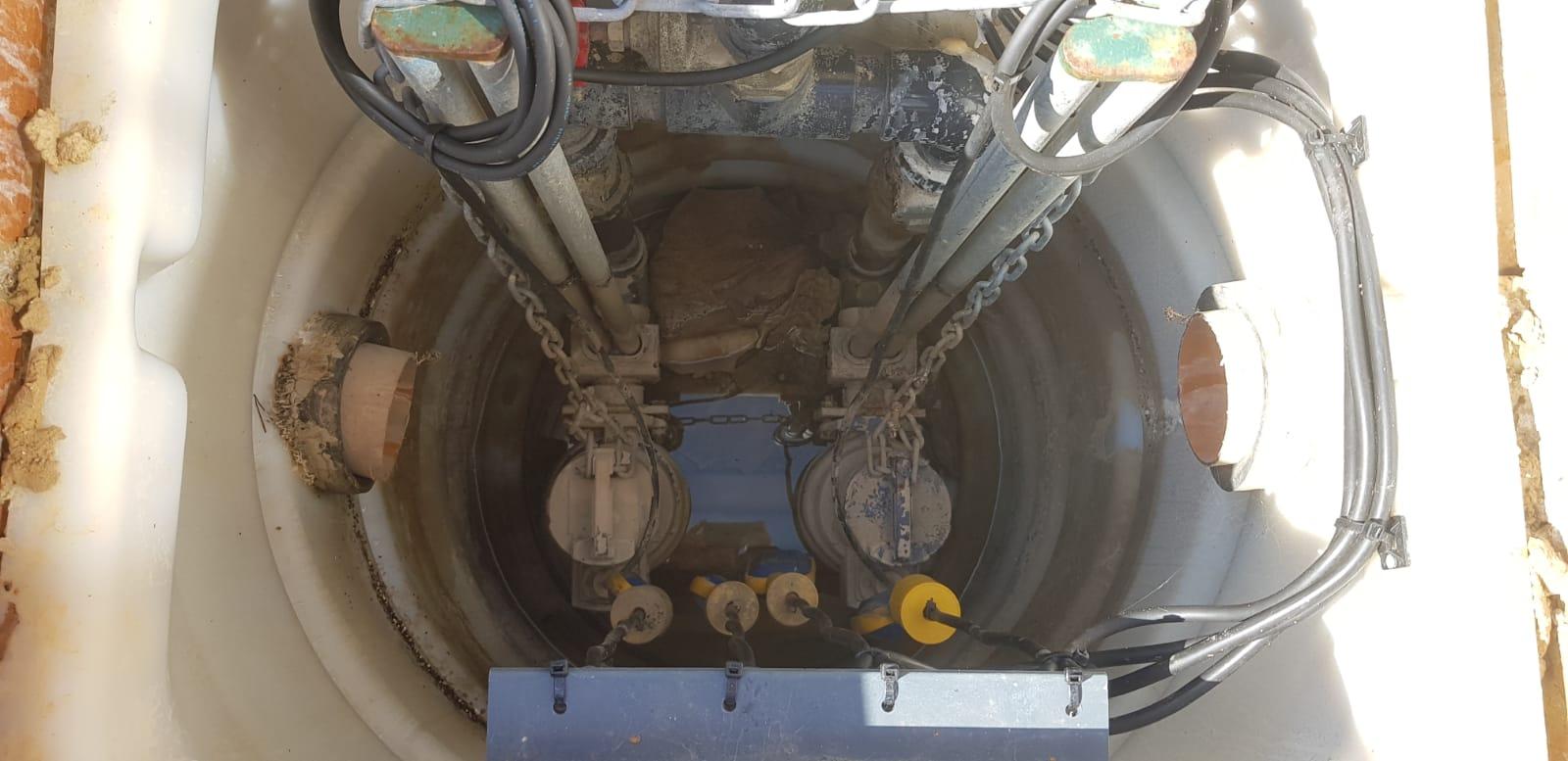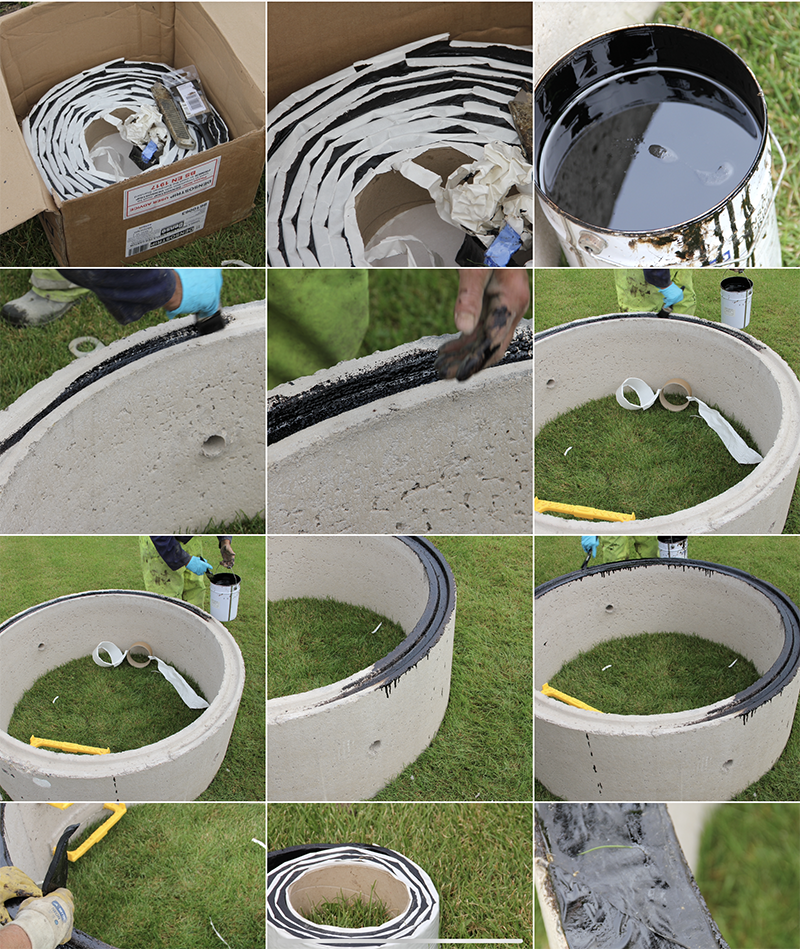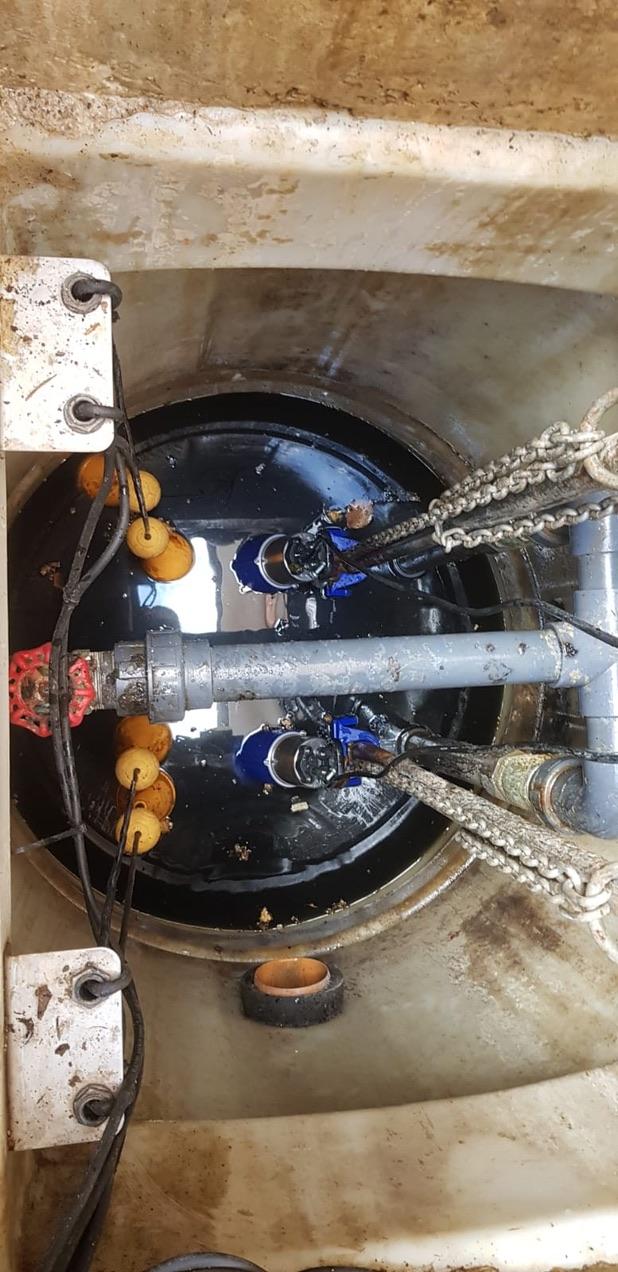Pumping chambers, why would you want one, and how do they work.
A pumping station is an intermediate collecting chamber for wastewater or surface water that needs to be pumped to another location.
A pump station is used where the collecting point for surface water is lower than the sewer disabling the use of gravity.
A pumping chamber can also be an additional step in the discharging of treated sewage water from a private sewage system. In systems with insufficient gravity, sets of pumps are used to transport treated sewage water to a draiange field or sewer that may be higher up or a long distance away to the porous ground.
For the main drain connection

You would want a pumping station if you needed to connect to the main public sewer in the road and your drains were lower than the main public drain.

For the treatment plant
You would want a pumping station to pump the treated water from your private treatment plant when the ground needed for a drainage field is only porous higher up in your garden.
[See later in this blog for pumping sewage to the treatment plant.]
How does a pumping station work
A brief synopsis.
The capacity of a pumping station should depend on how many bedrooms the property has to service.
The pumping station consists of a chamber – ideally big enough to hold fluid incase something goes wrong, commonly 24 hours worth – in order to pump it on to the next step of the system.
The pumping station chamber can be made up of concrete rings or plastic, surrounded by concrete; see our blog article entitled ‘what is a pumping station?’[/drainage-blog/what-pumping-station]
Once installed, float switches do most if not all the work, controlled from a panel.
A signal can be sent from the pumping stations control panel to our office via the Internet.
Each float switch has a different function.
- One float switch is triggered when the level of the sewage and sewage water reaches a certain level.
- Another float stops it before a pump runs dry when the level of the sewage and sewage water gets too low.
- The third float switch is triggered when Pumping Station gets too high; it sounds like a horn or a noise that will attract the attention of the owner and also has a flashing light where appropriate.
- Or a signal is sent to the ASLs office, and our pump engineer
- Back-up battery alarm systems are available

Pumping sewage into a treatment plant
Macerating solids
As a whole, we normally avoid pumping raw sewage. To be clear raw sewage is rarely pumped to a treatment plant. If raw sewage has to be pumped, we normally separate the solids from the wastewater and then pump the wastewater only. As a rule of thumb, we do not pump raw sewage unless the treatment plant receiving the raw sewage is doubled in size. It is more cost-effective and less problematic to separate the sewage water and pump water only.
Our main concern
The processed foreign waste from a kitchen entering the pumping station or a treatment plant (holding tank) must be redirected or stopped, not only to protect the pump and lengthen the life span, but to lengthen the time between emptying. Most importantly though, to prevent polluting the ground.
The main threats to a pumping station's functionality are:
- Fat, greece and oil;
- Plastic bags;
- Rags;
- These factors are often compounded by surface water entering the foul drainage system indirectly or directly.
See our blog article on surface water ingress.
If your ground is not porous enough for a soakaway or drainage field or you would like to pump your wastewater to the main sewer instead give us a call on 0800 181 684 to discuss your options further.

